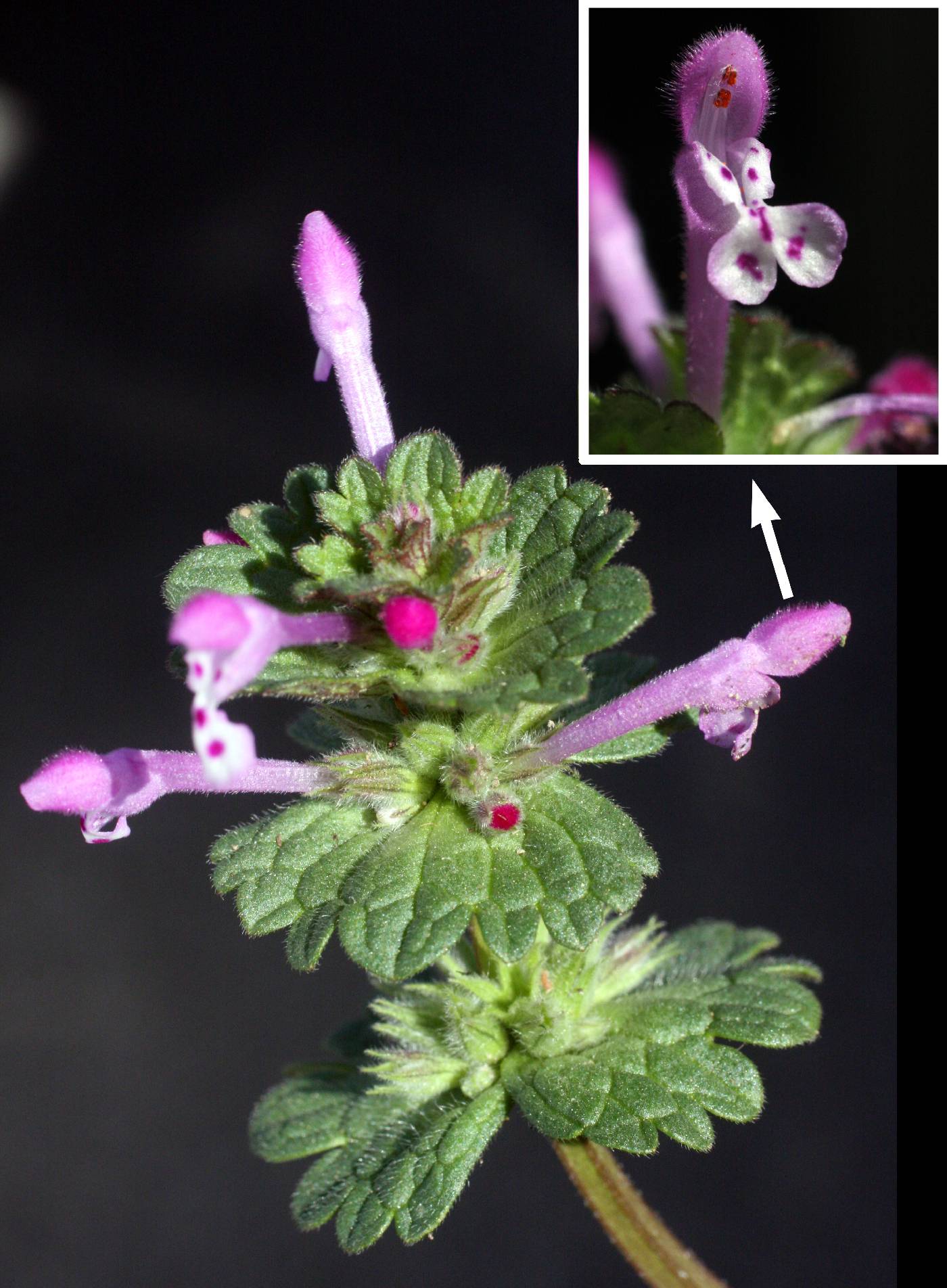Lamium
|
Family: Lamiaceae |
PLANT: Annual or perennial taprooted herbs, glabrous or pubescent; stems usually decumbent and branching near base. LEAVES: mainly petiolate, the upper ones often sessile; blades ovate or reniform to orbicular; margins entire, variously toothed or coarsely incised. INFLORESCENCE: verticillate, interrupted; bracts leafy. FLOWERS: sessile or subsessile; calyx actinomorphic, enlarging slightly in fruit, the lobe apices acuminate to awned; corolla zygomorphic, 2 lipped, the upper lip hooded, 2 lobed, the lower lip 3 lobed, the tube much exceeding calyx; stamens 4, usually included in hood, the anther sacs divaricate with none abortive; ovary sessile, lobed to base; stigma evenly 2 lobed. NUTLETS: obconic or obtriangular, glabrous, smooth or tuberculate. x = 9. NOTES: Ca. 40 spp.; Eurasia and n Afr. (name variously interpreted as Greek: lamium = throat, referring to the corolla shape; or, as Latin: name from Pliny of a nettle like plant). REFERENCES: Christy, Charlotte M. 2003. Lamiaceae J. Ariz. - Nev. Acad. Sci. Volume 35(2) Cal nearly regular, 5-nerved, the lobes equal or the upper the largest; cor bilabiate, the upper lip entire or 2-lobed, galeate-hooded, the lower spreading, constricted at the base of the enlarged, cleft or emarginate central lobe, the lateral lobes broad and low, seemingly borne on the cor-throat; stamens 4, ascending under the upper lip, the lower pair the longer; pollen-sacs conspicuously hairy, ±divergent or divaricate; nutlets trigonous, truncate above; herbs with toothed or pinnatifid, mostly cordate lvs and white to red or purple fls in verticils of 6-12 subtended by scarcely reduced lvs. 40, temp. Eurasia and n. Afr. Gleason, Henry A. & Cronquist, Arthur J. 1991. Manual of vascular plants of northeastern United States and adjacent Canada. lxxv + 910 pp. ©The New York Botanical Garden. All rights reserved. Used by permission. |

